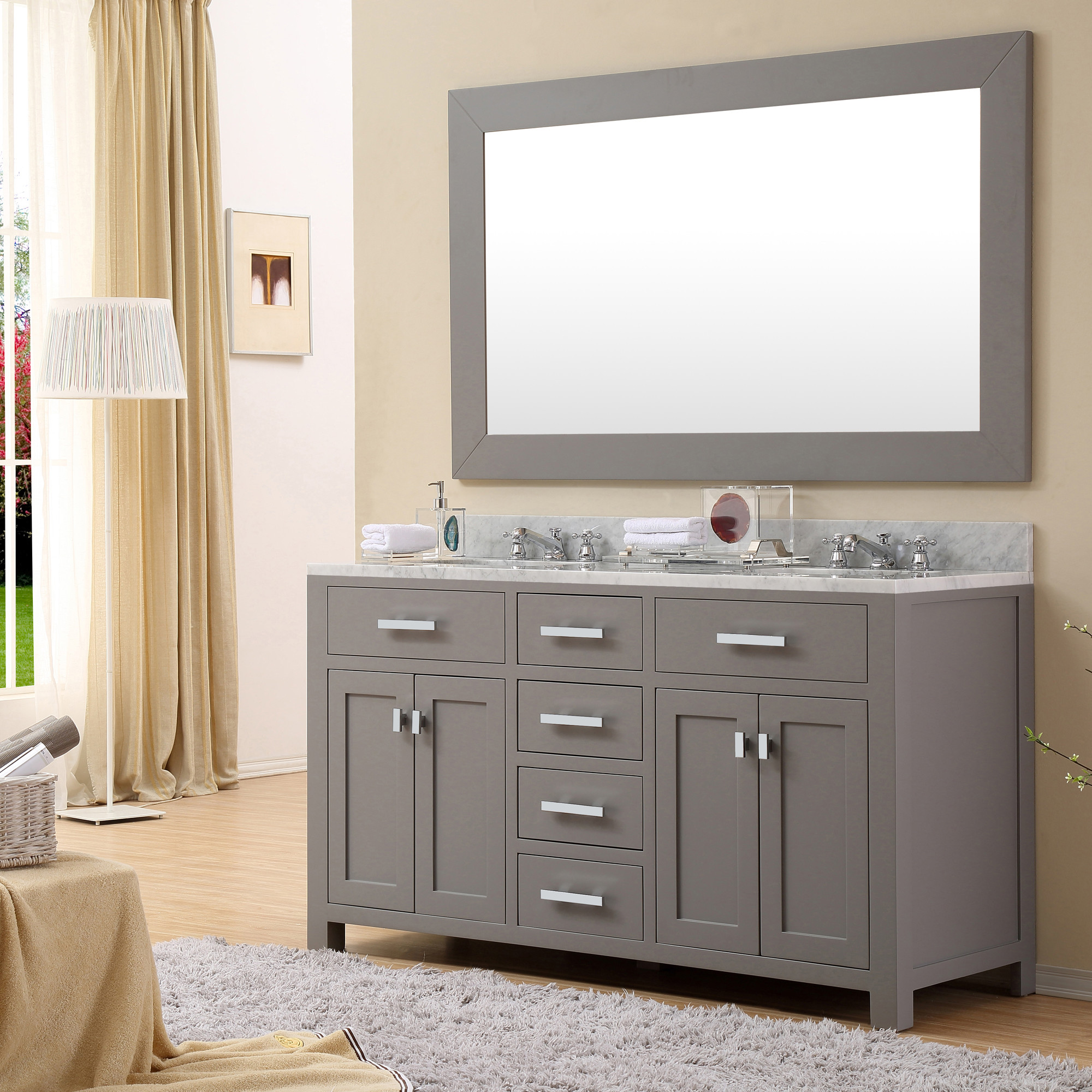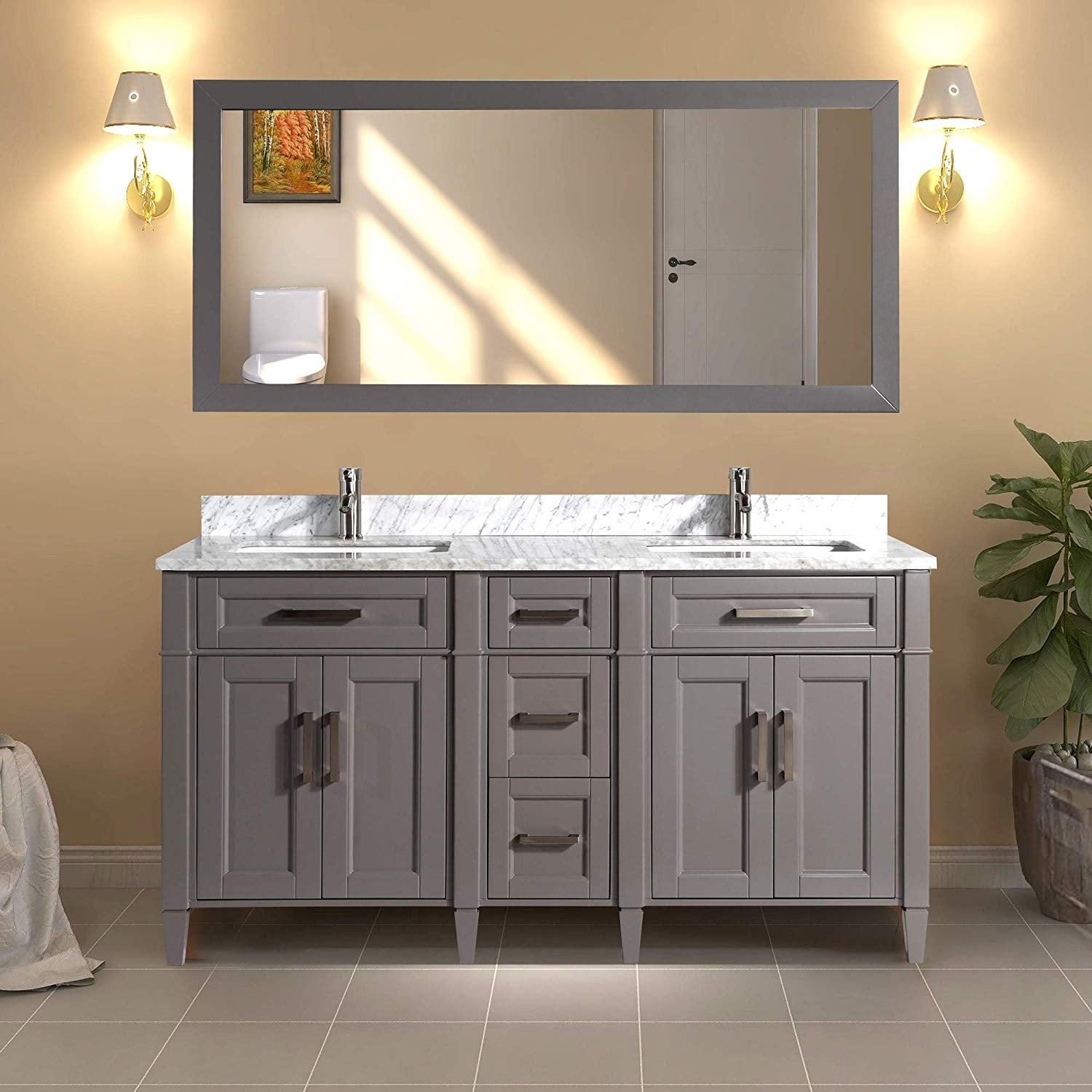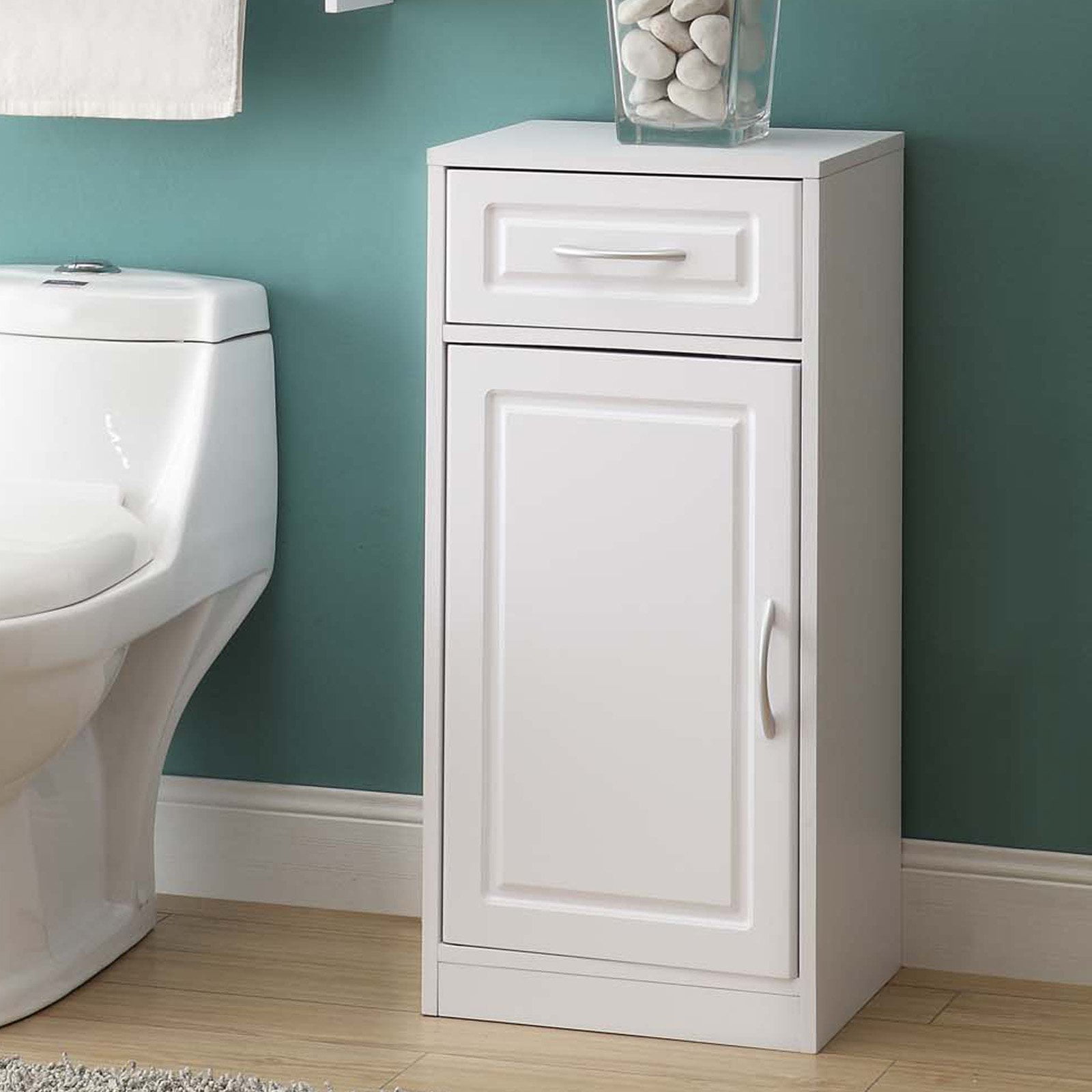Understanding 60 Inch Bathroom Cabinet Bases

A 60-inch bathroom cabinet base serves as the foundation for your bathroom vanity, providing ample storage space for toiletries, towels, and other essentials. It is a crucial element in creating a functional and aesthetically pleasing bathroom environment.
Common Features and Design Elements
60-inch bathroom cabinet bases come in a variety of designs, each with unique features to cater to different needs and preferences. Some common elements include:
- Drawers: Many cabinet bases feature drawers of varying sizes, offering convenient storage for smaller items. These drawers can be equipped with soft-close mechanisms for a smooth and quiet closing experience.
- Cabinets: Larger cabinets provide space for storing bulky items like towels or cleaning supplies. They can have adjustable shelves for versatility in organizing different items.
- Countertop: The countertop serves as a work surface for daily tasks like applying makeup or brushing teeth. It can be made of various materials, such as granite, marble, quartz, or laminate, depending on the desired aesthetic and durability.
- Sink: Most 60-inch bathroom cabinet bases include a sink, which can be either integrated into the countertop or installed separately. The sink style can vary, ranging from traditional undermount sinks to modern vessel sinks.
- Hardware: The handles, knobs, and other hardware elements on the cabinet base contribute to its overall style. They come in a wide array of materials, finishes, and designs to complement the cabinet’s aesthetic.
Styles and Materials, 60 inch bathroom cabinet base
60-inch bathroom cabinet bases are available in various styles to match different bathroom designs.
- Traditional: These cabinets often feature ornate details, such as raised panels, carved accents, and decorative hardware. They are typically made of solid wood, like oak or cherry, and may have a stained or painted finish.
- Modern: Modern cabinets prioritize clean lines, sleek surfaces, and minimalist design. They are often made of materials like MDF or laminate, with simple hardware and a glossy finish.
- Contemporary: Contemporary cabinets blend modern and traditional elements, offering a sophisticated and timeless look. They may feature a combination of wood and metal, with unique hardware and a matte or satin finish.
- Rustic: Rustic cabinets embrace natural textures and finishes. They are often made of reclaimed wood, with distressed surfaces and simple hardware. These cabinets can create a warm and inviting atmosphere.
Advantages and Disadvantages
Choosing a 60-inch bathroom cabinet base offers several advantages:
- Ample Storage: The larger size provides substantial storage space for all your bathroom necessities.
- Versatility: The cabinet base can be customized with different features, like drawers, cabinets, and countertops, to suit your specific needs.
- Aesthetic Appeal: A 60-inch cabinet base can create a focal point in your bathroom, enhancing its overall design and style.
However, there are also some potential disadvantages:
- Space Requirements: A 60-inch cabinet base requires a significant amount of floor space in your bathroom.
- Cost: Larger cabinets tend to be more expensive than smaller ones.
- Installation Complexity: Installing a 60-inch cabinet base can be more challenging than installing a smaller one, requiring more time and effort.
Factors to Consider When Selecting a 60 Inch Bathroom Cabinet Base

Choosing the right 60-inch bathroom cabinet base can significantly impact the functionality and aesthetics of your bathroom. Several factors should be considered before making a purchase, ensuring the cabinet base fits your specific needs and complements your bathroom’s overall design.
Types of 60 Inch Bathroom Cabinet Bases
The type of cabinet base you choose will influence its functionality, style, and price. Here’s a comparison of different types:
| Type | Material | Style | Storage Capacity | Price Range |
|---|---|---|---|---|
| Solid Wood | Oak, Maple, Cherry | Traditional, Modern, Contemporary | High | $$-$$$ |
| Laminate | Particleboard with laminate finish | Modern, Contemporary | Moderate | $-$$ |
| MDF | Medium-density fiberboard | Modern, Contemporary | Moderate | $-$$ |
| Acrylic | Acrylic sheet | Modern, Contemporary | Moderate | $$-$$$ |
Available Space and Layout
The available space and layout of your bathroom play a crucial role in determining the size and configuration of your cabinet base. It’s important to measure the available space accurately to ensure the cabinet fits seamlessly without obstructing movement or access to other fixtures.
Key Features and Functionalities
The features and functionalities you require will depend on your specific needs. Consider the following:
- Storage Capacity: Determine the amount of storage space you need for your bathroom essentials.
- Drawers and Shelves: Consider the number and size of drawers and shelves needed to accommodate your belongings.
- Hardware: Choose durable and stylish hardware that complements the cabinet’s design.
- Countertop Material: Select a countertop material that is durable, water-resistant, and easy to clean.
- Lighting: Consider incorporating lighting fixtures to illuminate the cabinet’s interior and provide ample light for grooming tasks.
Complementary Bathroom Decor
Choosing a cabinet base that complements your existing bathroom decor is crucial to maintain a cohesive and aesthetically pleasing space. Consider the following:
- Color Palette: Select a cabinet base that harmonizes with the existing color scheme of your bathroom.
- Style: Choose a cabinet base that complements the overall style of your bathroom, whether it’s traditional, modern, or contemporary.
- Materials: Select materials that complement other elements in your bathroom, such as the flooring, countertop, and fixtures.
Installation and Maintenance of 60 Inch Bathroom Cabinet Bases

Installing a 60-inch bathroom cabinet base is a relatively straightforward process, but proper planning and execution are essential for ensuring a secure and aesthetically pleasing outcome. This section will guide you through the installation steps, provide a list of required tools and materials, and offer tips for ensuring proper alignment and stability. We will also cover best practices for cleaning and maintaining your bathroom cabinet base to keep it looking its best for years to come.
Tools and Materials for Installation
Before you begin installation, gather the necessary tools and materials. This will ensure a smooth and efficient process.
- Cabinet Base: The 60-inch bathroom cabinet base you’ve chosen.
- Screwdriver or Drill: For attaching the cabinet base to the wall.
- Level: To ensure the cabinet base is installed straight and level.
- Measuring Tape: To accurately measure the installation space and mark the wall.
- Pencil: For marking the wall for drilling.
- Stud Finder: To locate wall studs for secure attachment.
- Safety Glasses: To protect your eyes during drilling.
- Wall Anchors (if necessary): If your walls are made of drywall or other materials that require anchors for secure installation.
- Silicone Caulk: To seal any gaps between the cabinet base and the wall.
Step-by-Step Installation Guide
Follow these steps to install your 60-inch bathroom cabinet base:
- Prepare the Installation Area: Clear the area where you’ll be installing the cabinet base. Remove any obstacles or obstructions that might interfere with the installation process.
- Locate Wall Studs: Use a stud finder to locate the wall studs in the area where you’ll be installing the cabinet base. Securing the cabinet base to the studs provides the strongest and most stable installation.
- Mark the Wall: Use a measuring tape and pencil to mark the wall where you’ll be installing the cabinet base. Ensure the marked area is level using a level.
- Drill Pilot Holes: If you’re attaching the cabinet base to wall studs, drill pilot holes at the marked locations. If you’re using wall anchors, drill holes that are the appropriate size for the anchors.
- Install Wall Anchors (if necessary): If you’re using wall anchors, install them into the drilled holes. Ensure they are securely in place before proceeding.
- Attach the Cabinet Base: Carefully align the cabinet base with the marked area on the wall. Attach the cabinet base to the wall using screws or by inserting the anchors into the pre-drilled holes. Ensure the cabinet base is level and securely attached.
- Seal Gaps (optional): Apply silicone caulk to seal any gaps between the cabinet base and the wall. This will prevent moisture from seeping behind the cabinet base and potentially causing damage.
Tips for Ensuring Proper Alignment and Stability
- Use a Level: Ensure the cabinet base is level both horizontally and vertically. This will ensure the cabinet base is installed correctly and prevents any tilting or instability.
- Attach to Wall Studs: Whenever possible, attach the cabinet base to wall studs. This provides the strongest and most stable installation. If attaching to drywall, use wall anchors to ensure secure installation.
- Double-Check Screw Length: Use screws that are the appropriate length for your wall material. Screws that are too long can damage the cabinet base or the wall, while screws that are too short may not provide sufficient support.
- Consider Weight Distribution: If you plan to store heavy items in the cabinet base, ensure the weight is evenly distributed. This will help to prevent the cabinet base from becoming unbalanced or unstable.
Cleaning and Maintenance Best Practices
- Regular Cleaning: Clean your bathroom cabinet base regularly to prevent dirt, grime, and water damage. Use a damp cloth and mild soap to wipe down the cabinet base. Avoid harsh chemicals or abrasive cleaners that can damage the finish.
- Prevent Moisture Damage: Keep the bathroom well-ventilated to prevent moisture buildup. This will help to prevent mildew and mold growth, which can damage the cabinet base.
- Check for Damage: Regularly inspect the cabinet base for any signs of damage, such as scratches, dents, or loose screws. Address any damage promptly to prevent further deterioration.
- Proper Storage: Store items in the cabinet base in a way that prevents them from being damaged or from causing damage to the cabinet base. Avoid overloading the cabinet base or placing heavy items on shelves that are not designed to support them.
